Why Bolivia Should Be Your Next South American Trip
May 15, 2019 - Original article: Condé Nast Traveler
by MEGAN SPURRELL
There are new resorts, an emerging wine scene, and natural highlights that have been there all along.
Bolivia has long been overshadowed by its neighbors Brazil, Argentina, Chile and Peru, thanks to fewer accommodation options and an absence of non-stop flights from the U.S. But there's plenty of reasons to visit the South American country—and it seems that U.S. travelers are finally starting to take notice. Spectacular natural sights like the Salar de Uyuni salt flats and the crimson Laguna Colorada lake are ripe for exploring, while newer draws, like destination restaurant Gusta and Tarija's blossoming wine scene are putting Bolivia on the culinary map, too. Plus, with the Amazing Escapes lodge in Uyuni having just opened last month, a new swath of luxury travelers are starting to pay attention. Here's why you should visit Bolivia before everyone else does.

Credit: Getty
Salar de Uyuni
Bolivia's claim to fame is the Uyuni salt flats—the largest in the world at a whopping 6,800 square miles. The best way to see the dazzling mass of salt for yourself? Hop on the hour-long flight from La Paz, and book a stay at the recently-opened Kachi Lodge. A collection of six geodesic domes outfitted with sheepskin rugs, proper heating, and plush beds, it opened May 1 as both the first luxury property in the area, and the first to land a location right on the salt flats (other accommodations are a 20-30 minute drive away, in neighboring towns).
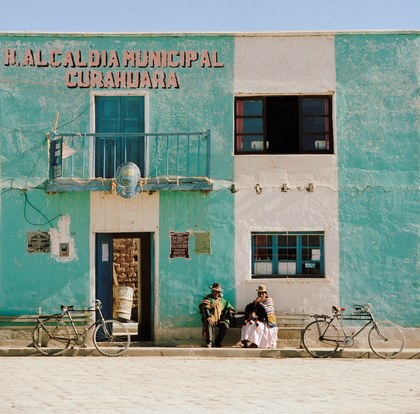
Credit: Getty
La Paz
Bolivia's capital sits at a dizzying 11,811 feet above sea level, making it the highest city in the world. But all the huffing and puffing you'll do getting around due to the altitude is worth it: In the same day you can eye hand-made talismans and dried llama fetuses at the Witches' Market, which caters to rituals held by the indigenous Aymara community, and explore the country's biodiversity through a tasting menu at Gustu, which was opened by Noma co-founder Claus Meyer in 2012 and has since landed on Latin America's Best Restaurants.
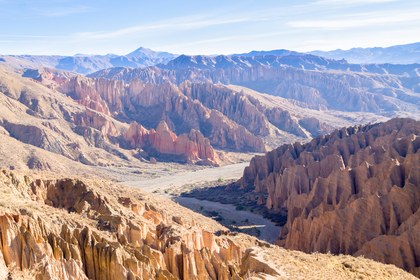
Credit: Getty
Tupiza
If you're heading to Uyuni, make a detour east to the small town of Tupiza. This backcountry town is an honest glimpse into rural Bolivian life, but the real reason to visit is to see the surrounding red rock canyons, a dramatic, craggy range accessible on foot or horseback. And if you think the scenery looks familiar, that's because it is: cowboy classic Butch Cassidy and the Sundance Kid was filmed here in 1969.

Credit: Julien Capmeil
El Alto
For most visitors to La Paz, the nearby town of El Alto has always been a popular half-day trip. You just have to hop on a cable car in the capital to get there, and the views overlooking the city are second to none. In the past few years, however, flamboyant buildings by modern Aymara architect Freddy Mamani have become the main attraction. Mamani's retro-looking designs draw on indigenous Aymara and Incan motifs, with a little inspiration from sci-fi movies like Transformers. Bonus: The striking color palette makes them impossible to miss.
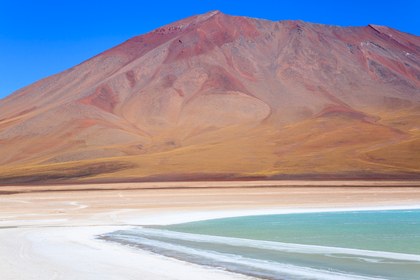
Credit: Getty
Laguna Verde
In the southwestern corner of Bolivia, this jewel-toned lake is another mind-boggling result of natural salt deposits—plus, it has the Licancabur volcano as its backdrop, and counts rare James's flamingos among its residents. For the best view, trek to the top of the volcano, where you'll be rewarded with Incan ruins and a small crater lake. Laguna Verde is best visited as part of a day trip from Uyuni (it takes just a couple hours to get there, and can be combined to visits to the Polques hot springs).

Credit: Getty
Isla del Sol
Smack dab in the middle of Lake Titicaca lies Isla del Sol. The largest of 41 islands dotting the massive Andean lake, it's home to dozens of archaeological sites, such as the Piko Kaina Incan Temple, and is crisscrossed with short but tough hiking trails that deliver spectacular views over the lake. (The walk up Cerro Palla Khasa, one of the highest peaks, takes just 30-minutes.) To get there, take the two-hour ferry-ride from the lakeside city of Copacabana.
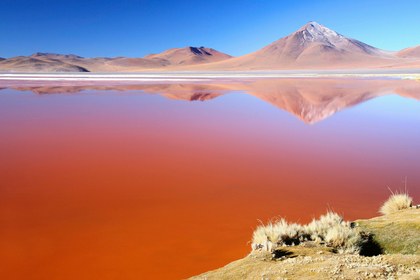
Credit: Getty
Laguna Colorada
On the Bolivian altiplano, not far from the Chilean border, is the otherworldly Laguna Colorada. The lake's blood red color comes from a mix of minerals and algae, which is so strongly pigmented that you'd never know the local flamingos who wade in it were born white, not their existing pink. It's a nearly five-hour drive from Uyuni, and the hotels nearby are basic at best, so work with a travel specialist to pull it off.
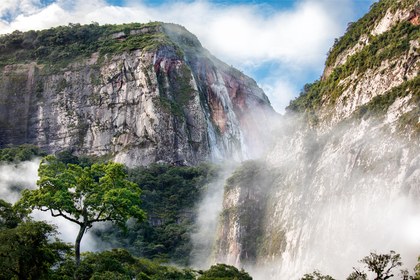
Credit: Alamy
Amboro National Park
If you're looking to really go off the grid, head to Amboro National Park, which spans three of the continent's major natural climates—the Andean foothills, the Chaco lowlands, and the Amazon basin—and is home to pumas, ocelots, over 3,000 species of plants, and a range of sandstone rock formations. To get there, take the one-hour flight from La Paz to Santa Cruz, then arrange a driver for the two-hour stretch of road to the park. Accommodations are sparse, but Refugio los Volcanes is a modest eco-lodge right in the park. Come here for a true off-the-grid escape.

Credit: Getty
Lake Titicaca
One of South America's largest lakes, Lake Titicaca straddles Bolivia and Peru. Local folklore says it was the birthplace of the Inca, but pre-Incan ruins such as an underwater temple prove it was also inhabited long before. Today, it draws history buffs intrigued by modern-day Aymara culture, and travelers looking for a natural space to unwind in (boat over to the Peruvian side for luxury waterfront stays like Titilaka, a Relais & Châteaux hotel). Keep in mind, though, that while the weather is fairly stable year-round, this high-altitude spot isn't warm enough for swimming: highs hover in the 60s, with daily lows in the 30s or 40s. (Make sure to pack layers.) Have a travel specialist arrange a car for the three-hour drive from La Paz to the lakeside hub of Copacabana, and stay on the lake for a night or two.
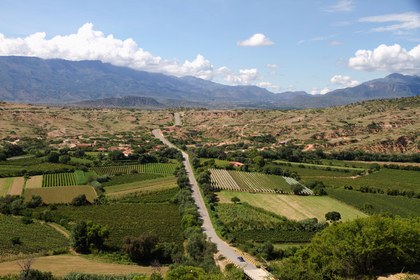
Credit: Getty
Tarija
Sure, Chile and Argentina's wines may get all the attention now, but that's about to change: Oenophiles are flocking to Tarija for wine tastings paired with outdoor pig roasts against a backdrop of vineyard. Get to know the region's strong reds—most vineyards are focusing on full-bodied tannats, at wallet-friendly prices—at vineyards like Campos de Solana and Casa Grande. Bonus: Tarija is an easy one-hour flight from La Paz, so book an Airbnb and stick around for a night or two.